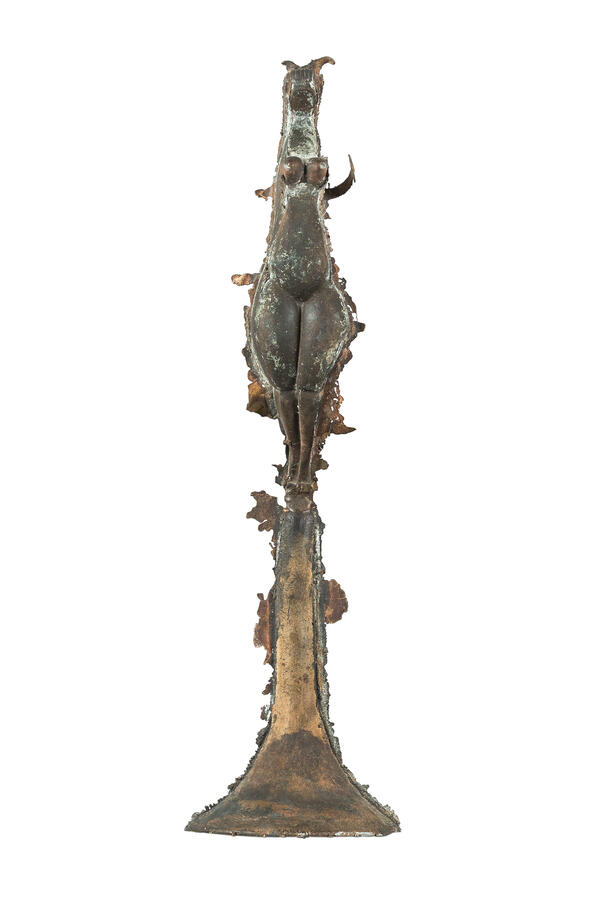The bronze sculpture “Animal Woman” is one of the early works of Joseph Beuys: it was created in 1949 when he was still a student. During that time, he mostly worked with images of animals and human figures, as well as religious subjects.
This sculpture by Beuys from the Ludwig museum’s collection combines the human appearance with the features of a fantastic dangerous predator. The image of the “Animal Woman” helps the artist explore archetypes — universal ideas, patterns and memories that have been part of the collective unconscious since ancient times. Archetypes are present in all people’s minds and often manifest themselves through dreams. Beuys used a similar image in his later painting and sculpture works as well.
Joseph Beuys said about his artistic manner,
This sculpture by Beuys from the Ludwig museum’s collection combines the human appearance with the features of a fantastic dangerous predator. The image of the “Animal Woman” helps the artist explore archetypes — universal ideas, patterns and memories that have been part of the collective unconscious since ancient times. Archetypes are present in all people’s minds and often manifest themselves through dreams. Beuys used a similar image in his later painting and sculpture works as well.
Joseph Beuys said about his artistic manner,



